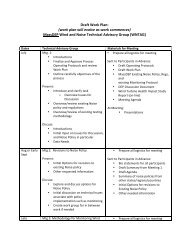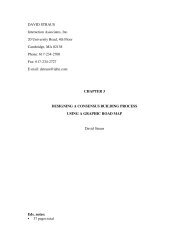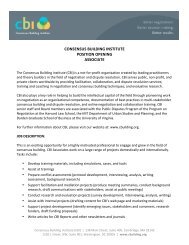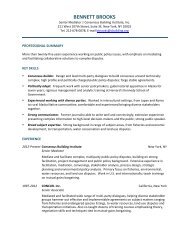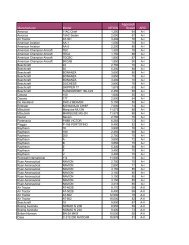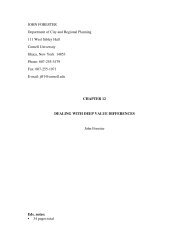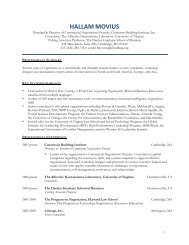Vegetated Geogrids
Vegetated Geogrids
Vegetated Geogrids
You also want an ePaper? Increase the reach of your titles
YUMPU automatically turns print PDFs into web optimized ePapers that Google loves.
moment in the sheet piling, the requiredthickness of the sheet piling, the size andspacing of any tie rods, the bendingmoment and required size of wales (ifthey are utilized), and the requiredsize/location of the deadman (if utilized).The characteristics of the substrate onwhich a bulkhead is to be constructed isextremely important. With the exceptionof gravity bulkheads, bulkheads rely onembedment for their strength, thereforethey must be anchored far enough intothe ground in order to be stable.Interlocking sheet piles can be drivendeeply into the ground if the foundationis sand or earth; however holes must bedrilled and grout or concrete used toanchor the sheets if bedrock is present.Depending on the expected loadingconditions, a gravity bulkhead may alsobe appropriate if bedrock is present.Wave conditions also play an importantrole in determining the appropriatenessof a bulkhead for a particular site. Ifconstructed in a location where waveswill continually beat against the face ofthe bulkhead, proper materials must beused to withstand these strong forces.Bulkheads should not be constructedwhere wave action will cause excessiveovertopping of the structure.Stability will also be impacted by thelocal water table. If there is a gradient inwater level across a structure that isunaccounted during the design phase,additional overturning moments could becreated that would compromise itsstability.Other concerns include the loads anddamages that the structure might endurefrom ice flows, and the type of activitybeing performed behind the structure.The operation of forklifts and otherheavy equipment behind a bulkhead cantransfer significant loads to the soil,which if unaccounted for during thedesign process can result in structuralfailure.Bulkheads generally have a lowmoderateinstallation cost which reflectsa balance between low material costsand high labor and equipment costs.Costs of between $500 and $1,000 perlinear foot are typical.As a general rule, bulkheads should beevaluated every five to six years.Assessing the condition of bulkheads ona regular basis can extend the service lifeof the structure. Performing preventativemaintenance or minor repairs beforethey become major concerns cansignificantly prolong the life of abulkhead. Repairs can cost anywherefrom $100-$400 per linear foot of wall.AdaptabilityBulkheads are generally not veryadaptable. As a fixed height wall,accommodation for future sea level riseis not possible without significantmodifications, potentially requiring thereplacement of the entire structure.DRAFTAdvantagesBulkheads have many advantages overother engineered shore protectionapproaches, among them are:• Bulkheads may be the mostappropriate solution for areas wherethe primary use of the shore is forfishing and boating.




